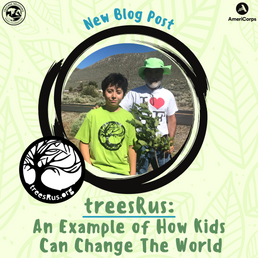It's the Little Things: Phenology Tracking at the Wetland
- Truckee Meadows Parks Foundation
- May 3, 2021
- 3 min read
A wise bear, Winnie the Pooh, once said, “Sometimes the smallest things in life take up the most room in your heart”, and I’ve found myself pondering this as little signs of spring pop up around town. Witnessing deciduous trees produce a fresh growth of leaves, seeing the vibrant hues of wildflowers on trails, or quietly observing baby geese learn the ways of the world have become some of my greatest joys this past month. The swift culture of our society can make it easy to let the seasons pass without noticing their unique intricacies, but there is much we can gain from observing the small, seasonal changes of our flora and fauna.

One tool that can be used to document these changes is phenology, which is the study of the life cycles of plants and animals and the timing of their biological events. The exact time a quaking aspen’s leaves turn yellow in the fall or when green-winged teal winter migration begins are all examples of phenology.The key word here is “exact”. An aspen’s leaves are expected to turn yellow in autumn. However, that is a broad range and can differ in response to location as well as changes in temperature and precipitation. Even minuscule changes in the timing of a phenotypic characteristic can be a predictor of how a plant or animal might respond to climate change. By documenting trends in the phenology of plants and wildlife over time, researchers can forecast shifts in these seasonal events and help us better prepare for the ecosystem shifts that may happen as a result.
Gathering phenological data requires making regular observations on a select group of plants and animals on a regular, long term basis. To facilitate phenology research efforts, the USA National Phenology Network created a program called Nature’s Notebook, which is a community science program that collects phenological data from observers across the country. When participants submit observations into the Nature’s Notebook database, the information becomes available for scientists to use for their research. This greatly helps climate scientists in their data collection efforts because it expands the range in which they have access to phenological data and increases the manpower available to make observations.
Nature’s Notebook data has already been used to draw conclusions in many peer-reviewed studies.For example, land managers at the Midway Atoll National Wildlife Refuge used phenology as a tool to successfully eradicate invasive golden crownbeard, or Vebesina enceliodes. At the time, golden crownbeard covered about 50% of the atoll and was extremely difficult to remove, even with herbicides. Researchers tracked the phenology of the plant to determine when its seeds drop, and found that the time period in between initial growth of the plant and its seeding could be as short as 31 days. This knowledge helped to inform land managers to apply herbicide treatment within the 31 day window and as a result, golden crownbeard coverage dropped to less than 1%. Other studies have used phenology as a tool to measure fire danger based on the phenology of the plant, or to determine that invasive plants tend to leaf out earlier compared to native species.

At the Rosewood Nature Study Area, we are creating a volunteer program with Nature’s Notebook to collect phenological data on a select group of plants and animals. Collecting data will serve as a crucial tool to aid wetland management decisions and provide an opportunity for the community to be involved in the restoration process. Volunteers will make observations about native plants and animals to track how changes in temperature and precipitation could alter the timing of lifecycle events, such as bird migrations. Similar to the Midway Atoll case study, we will also track invasive plants to determine the exact window between new growth and seeding to target herbicide application at the optimal time. Additionally, by submitting observations in the Nature’s Notebook Database, our volunteers will be direct contributors to national climate research.
Scientific benefits aside, there is something special about engaging with nature on a minuscule scale, and I have found phenology tracking to be therapeutic in a way. I feel a rush of excitement when the tree I’ve been monitoring for several weeks produces its first leaf bud of spring. My hope is that other community members would be able to delight in the little wonders of our natural world through the observation of phenology. The Rosewood Community Scientist program is set to launch in late spring, so be on the lookout for more information on our website and social media platforms. Best of all, no experience is required and training will be provided. All are welcome here!
To learn more about the Rosewood Nature Study Area, click below!
For more information on upcoming events, check out our volunteer page:
































google seo…
무료카지노 무료카지노;
03topgame 03topgame
gamesimes gamesimes;
Fortune Tiger…
Fortune Tiger…
Fortune Tiger…
EPS Machine…
EPS Machine…
seo seo
betwin betwin;
777 777;
slots slots;
Fortune Tiger…
谷歌seo优化 谷歌SEO优化+外链发布+权重提升;
đăng ký Kubet88 là nhà cái uy tín, hợp pháp khẳng định dựa trên giấy phép và chứng chỉ hoạt động được cấp bởi 2 tổ chức lớn là PAGCOR và Isle of Man. Với thâm niên phát triển hơn 18 năm, đơn vị cam kết sẽ xây dựng nên sân chơi lý tưởng và minh bạch nhất cho toàn thể khách hàng.
代发外链 提权重点击找我;
google留痕 google留痕;
Fortune Tiger Fortune Tiger;
Fortune Tiger Fortune Tiger;
Fortune Tiger Slots Fortune…
站群/ 站群;
万事达U卡办理 万事达U卡办理;
VISA银联U卡办理 VISA银联U卡办理;
U卡办理 U卡办理;
万事达U卡办理 万事达U卡办理;
VISA银联U卡办理 VISA银联U卡办理;
U卡办理 U卡办理;
온라인 슬롯 온라인 슬롯;
온라인카지노 온라인카지노;
바카라사이트 바카라사이트;
EPS Machine EPS Machine;
EPS Machine EPS Machine;
EPS Machine EPS Machine;